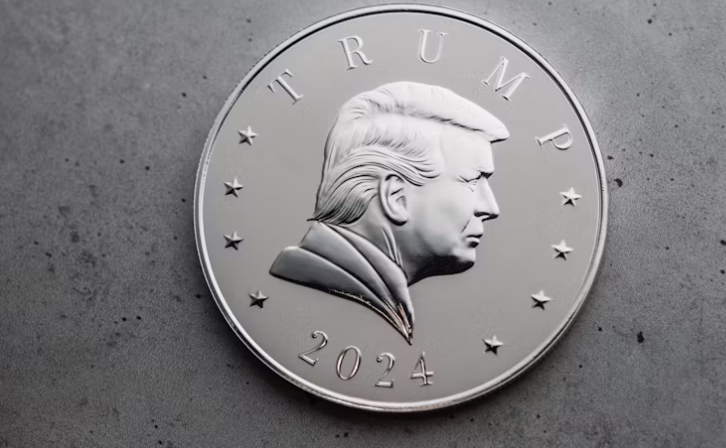$DXY $SPY $BTC
#TrumpEconomics #Geopolitics #MacroTrends #StockMarket #USPolitics #InvestorOutlook #GlobalMarkets #CryptoAnalysis #EconomicPolicy #TradeWar #DollarIndex #MarketVolatility
Donald Trump’s potential second term as President of the United States could significantly impact the American economy and global markets. As investors brace for possible policy changes, the uncertainties surrounding fiscal strategies, trade dynamics, and international relations weigh heavily on financial benchmarks. Traders have already started speculating about key implications, including the potential strengthening of the U.S. dollar ($DXY), volatility in equity markets such as the S&P 500 ($SPY), and crypto market reactions ($BTC) as investors hedge against policy unpredictability. Trump’s first term was marked by highly publicized tax cuts, trade actions, and an “America-first” agenda, which pushed U.S. equities to new highs but also heightened global instability. A focus on similar strategies during a second term would likely continue to have far-reaching consequences for sectors reliant on global trade and investment flows.
One of the key elements of Trump’s platform has been a focus on tax reform, which, during his first term, catalyzed business growth and increased consumer confidence. A potential second term could reignite these fiscal policies, possibly translating to further corporate tax cuts or incentives to boost domestic manufacturing. While this may create near-term tailwinds for U.S. companies, sectors heavily reliant on global supply chains could face sharp disruptions due to renewed trade tensions. The technology sector, which benefitted from both growth-focused policies and targeted tariffs on competitors, could again see mixed market performance. Similarly, indices like $SPY could swing depending on external influences, including whether global trade slows as a consequence of U.S.-China tariff policies being reintroduced.
Globally, Trump’s return might lead to heightened geopolitical risks. The “America-first” stance historically created challenges for international allies while strengthening calls for de-dollarization in some global markets. A strong dollar ($DXY) not only creates headwinds for U.S. exporters but also puts pressure on emerging markets with significant dollar-denominated debt. On the other hand, fears of inflationary spending or fiscal instability could drive an uptick in interest in alternatives like Bitcoin ($BTC) and precious metals. Should the Federal Reserve remain cautious, balancing Trump’s fiscal agenda with monetary tightening could create a unique set of challenges for currency and bond markets. Investors in these areas will likely monitor Federal Reserve policy closely for signs of dovish or hawkish adjustments.
As global markets consider the potential impact of Trump’s policies, the interconnected nature of today’s economy heightens both opportunities and risks. Themes such as energy independence, reshoring of supply chains, and immigration reform may be prominent domestically, while global partners eye shifts in U.S. trade strategy, NATO contributions, and cooperative relationships. Sectors ranging from defense contractors to renewables could witness sharp valuation changes based on political developments. Consequently, market participants would be wise to prepare for volatility across asset classes, driven by executive orders, legislative priorities, and the broader economic landscape under a possible Trump second term. For those navigating this environment, a closer focus on currency fluctuations, equity reactions, and commodities might offer an edge in understanding its ramifications.











Comments are closed.